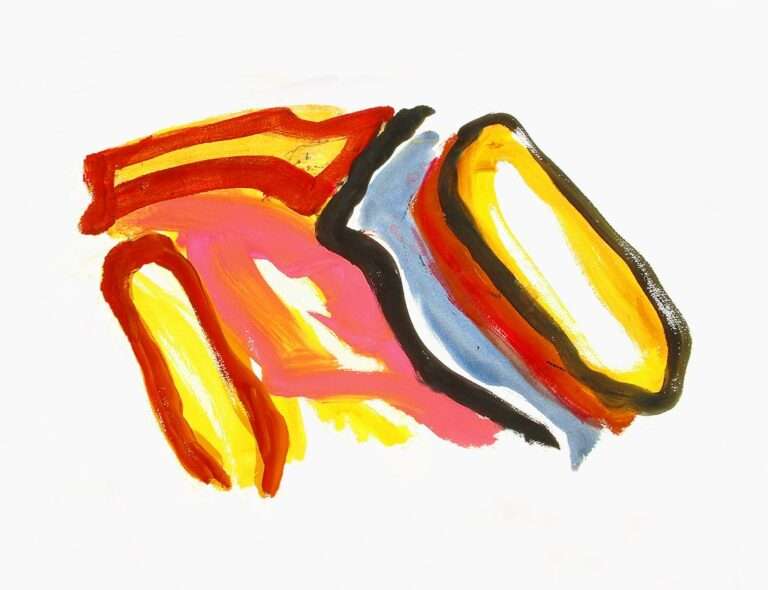How is the ankh symbol interpreted in ancient Egyptian culture?

The Ankh symbol, also known as the key of life, the key of the Nile, or crux ansata, is an ancient Egyptian hieroglyphic symbol representing life and immortality. Its exact origins are uncertain, but it is believed to have emerged in ancient Egypt during the Early Dynastic Period, around 3150 BCE. The Ankh is closely associated with Egyptian deities, particularly the goddess Isis, who is frequently portrayed holding it.
In ancient Egyptian religion and mythology, the Ankh symbol is linked to the concept of Ma’at, which embodies truth, balance, order, harmony, and justice. The symbol appears extensively in ancient Egyptian art and hieroglyphics, where it is thought to have served as a talisman for protection and good fortune. The Ankh’s prevalence in Egyptian iconography underscores its significance in the culture’s belief system and daily life.
Its use extended beyond religious contexts, appearing in various forms of artistic expression and on everyday objects. The symbol’s enduring presence in Egyptian artifacts and texts attests to its importance as a representation of life force and spiritual power in ancient Egyptian civilization.
Key Takeaways
- The Ankh symbol originated in ancient Egypt and is believed to represent life and immortality.
- The Ankh is a powerful symbol in ancient Egyptian culture, representing the key to the afterlife and the breath of life.
- In ancient Egyptian art, the Ankh is often depicted being held by gods and pharaohs, symbolizing their power and authority.
- The Ankh holds religious and spiritual significance in ancient Egyptian beliefs, representing the union of male and female principles and the key to eternal life.
- The Ankh continues to be a symbol of life and immortality in modern culture, often used in jewelry and as a tattoo design.
Meaning and Symbolism of the Ankh
The Symbolism of the Ankh
The loop at the top of the Ankh represents the sun rising over the horizon, while the vertical line represents the path of the sun. This interpretation ties the Ankh to the concept of eternal life and the afterlife in ancient Egyptian belief.
Balancing Principles
The Ankh is also seen as a symbol of balance and harmony, representing the union of male and female principles, as well as the balance between life and death.
A Symbol of Power and Authority
In addition to its association with life and immortality, the Ankh is also considered a symbol of power and authority, often associated with the divine authority of the pharaohs.
Use and Representation of the Ankh in Ancient Egyptian Art
The Ankh symbol was widely used in ancient Egyptian art and was often depicted in various forms, including jewelry, amulets, and wall paintings. It was commonly worn by both men and women as a protective amulet, believed to bring health, prosperity, and long life to its wearer. The Ankh was also frequently depicted in tomb paintings and carvings, where it was often held by gods and goddesses as a symbol of their divine authority over life and death.
In addition to its use in personal adornment and religious iconography, the Ankh was also used in funerary rituals and was often placed in tombs to ensure the deceased’s safe passage into the afterlife. The Ankh symbol was widely used in ancient Egyptian art and was often depicted in various forms, including jewelry, amulets, and wall paintings. It was commonly worn by both men and women as a protective amulet, believed to bring health, prosperity, and long life to its wearer.
The Ankh was also frequently depicted in tomb paintings and carvings, where it was often held by gods and goddesses as a symbol of their divine authority over life and death. In addition to its use in personal adornment and religious iconography, the Ankh was also used in funerary rituals and was often placed in tombs to ensure the deceased’s safe passage into the afterlife.
Religious and Spiritual Significance of the Ankh
In ancient Egyptian religion, the Ankh symbol held deep religious significance as a representation of life and immortality. It was closely associated with various gods and goddesses, particularly with Isis, who was often depicted holding an Ankh in her hand. The Ankh was also associated with Osiris, the god of the afterlife, who was often depicted holding an Ankh in one hand and a scepter in the other.
The combination of these symbols represented his role as a ruler of the afterlife and his ability to grant eternal life to the deceased. The Ankh was also closely associated with Ma’at, the goddess of truth and justice, who was often depicted holding an Ankh in one hand while standing on a hieroglyph representing stability. In ancient Egyptian religion, the Ankh symbol held deep religious significance as a representation of life and immortality.
It was closely associated with various gods and goddesses, particularly with Isis, who was often depicted holding an Ankh in her hand. The Ankh was also associated with Osiris, the god of the afterlife, who was often depicted holding an Ankh in one hand and a scepter in the other. The combination of these symbols represented his role as a ruler of the afterlife and his ability to grant eternal life to the deceased.
The Ankh was also closely associated with Ma’at, the goddess of truth and justice, who was often depicted holding an Ankh in one hand while standing on a hieroglyph representing stability.
Ankh as a Symbol of Life and Immortality
The Ankh symbol is widely regarded as a powerful representation of life and immortality in ancient Egyptian culture. Its association with various gods and goddesses, particularly with Isis and Osiris, underscores its significance as a symbol of eternal life. The loop at the top of the Ankh is often interpreted as a representation of eternal life or rebirth, while the vertical line represents the path to the afterlife.
This interpretation ties the Ankh to the concept of resurrection and eternal life after death in ancient Egyptian belief. The Ankh was often used in funerary rituals to ensure safe passage into the afterlife for the deceased, emphasizing its role as a powerful symbol of immortality. The Ankh symbol is widely regarded as a powerful representation of life and immortality in ancient Egyptian culture.
Its association with various gods and goddesses, particularly with Isis and Osiris, underscores its significance as a symbol of eternal life. The loop at the top of the Ankh is often interpreted as a representation of eternal life or rebirth, while the vertical line represents the path to the afterlife. This interpretation ties the Ankh to the concept of resurrection and eternal life after death in ancient Egyptian belief.
The Ankh was often used in funerary rituals to ensure safe passage into the afterlife for the deceased, emphasizing its role as a powerful symbol of immortality.
Evolution and Continuation of the Ankh Symbol in Modern Culture

The Ankh in Contemporary Subcultures
In contemporary society, the Ankh has been adopted by various subcultures such as Goths, Wiccans, New Agers, and those interested in alternative spirituality.
Fashion and Accessories
It has become a popular motif in fashion accessories such as necklaces, earrings, bracelets, rings, and clothing designs.
Tattoo Symbolism
Additionally, it has been incorporated into modern tattoo designs as a symbol of life, spirituality, or personal significance.
Cultural and Historical Context of the Ankh Symbol in Ancient Egypt
The cultural significance of the Ankh symbol within ancient Egypt cannot be overstated. It was deeply intertwined with religious beliefs about life after death and played an essential role in funerary practices. The use of the Ankh extended beyond religious contexts; it was also employed by individuals seeking protection or good fortune due to its association with life-giving properties.
Its presence in tombs further emphasizes its importance within funerary practices; it was believed that placing an Ankh within a tomb would ensure safe passage into the afterlife for the deceased. The cultural significance of the Ankh symbol within ancient Egypt cannot be overstated. It was deeply intertwined with religious beliefs about life after death and played an essential role in funerary practices.
The use of the Ankh extended beyond religious contexts; it was also employed by individuals seeking protection or good fortune due to its association with life-giving properties. Its presence in tombs further emphasizes its importance within funerary practices; it was believed that placing an Ankh within a tomb would ensure safe passage into the afterlife for the deceased. In conclusion, the Ankh symbol holds great historical significance within ancient Egyptian culture due to its association with life-giving properties such as fertility and immortality.
Its use within religious contexts underscores its importance within funerary practices; it was believed that placing an Ankh within a tomb would ensure safe passage into the afterlife for the deceased. Furthermore, its continued presence within modern culture demonstrates its enduring appeal across different societies throughout history.
FAQs
What is the ankh symbol in ancient Egyptian culture?
The ankh symbol is an ancient Egyptian hieroglyphic symbol that represents life and immortality. It is often depicted as a cross with a loop at the top.
How was the ankh symbol used in ancient Egyptian culture?
The ankh symbol was commonly used in ancient Egyptian art and religious iconography. It was often held by gods and goddesses in depictions of them, symbolizing their ability to grant and sustain life.
What does the ankh symbol represent in ancient Egyptian culture?
The ankh symbol is interpreted as a symbol of life, fertility, and immortality in ancient Egyptian culture. It is also associated with the afterlife and the concept of eternal life.
What are some modern interpretations of the ankh symbol?
In modern times, the ankh symbol is often associated with spirituality, healing, and protection. It is also used as a symbol of ancient Egyptian culture and heritage.





